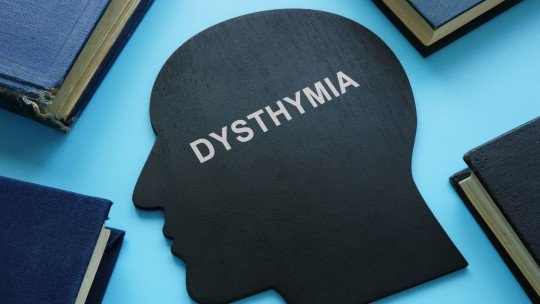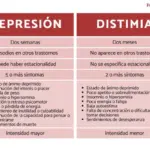
Dysthymia, also known as persistent depressive disorder, is a mood disorder that often goes unrecognized due to its chronic nature and less intense symptoms compared to major depression. Despite its apparent subtlety, dysthymia can have a significant impact on the quality of life of those who suffer from it. In this article, we will explore this disorder in depth, from its characteristics and diagnosis to its treatment and management in everyday life.
What is dysthymia?
Dysthymia is characterized by the presence of moderately intense but chronic depressive symptoms that persist for at least two years in adults (one year in children and adolescents). These symptoms include feelings of sadness, hopelessness, low self-esteem, fatigue, changes in appetite, and problems sleeping. Although the symptoms of dysthymia are less severe than those of major depression, they can significantly affect the daily functioning and quality of life of the affected person.
Diagnosis and Differentiation of Dysthymia
Diagnosing dysthymia can be challenging due to the chronic, underlying nature of the symptoms. It is important to distinguish between dysthymia and major depression, since both conditions share similar characteristics but have differences in the duration and intensity of symptoms. An accurate diagnosis requires a thorough evaluation of the medical history, current symptoms, and duration of emotional distress.
Treatment and Management of Dysthymia
Treatment of dysthymia may include a combination of psychological therapy and medication. Cognitive behavioral therapy (CBT) has been shown to be effective in addressing negative thinking patterns and promoting healthy coping skills. Additionally, antidepressants may be prescribed to help relieve symptoms and improve the emotional well-being of the affected person.
In addition to professional treatment, there are self-help strategies that can help manage dysthymia in everyday life. These include practicing relaxation techniques, maintaining a healthy lifestyle with regular exercise and a balanced diet, establishing daily routines, and seeking social and emotional support.

Discovering Inner Strength: A Story of Personal Improvement
In a quiet town, lived Marta, a 25-year-old girl who was facing a silent internal struggle. Marta, seemingly radiant on the outside, hid a storm of emotions inside. Her life was marked by anxiety and low self-esteem, the result of years of bullying at school and constant criticism from his family.
As she grew older, Marta found herself increasingly trapped in a cycle of negativity. She constantly compared herself to others, feeling inferior and unworthy. Her dreams and aspirations were fading amidst her fear of failure and her lack of self-confidence.
However, one day, everything changed. Marta came across a book on personal growth at the local library. Intrigued, she began reading and soon found herself immersed in a world of inspiration and motivation. As she absorbed the encouraging words and practical advice in the book, something inside her began to change.
She decided to take the first step towards a path of self-discovery and empowerment. He began practicing daily gratitude, focusing on the positive things in his life instead of focusing on the negative. He learned to challenge his automatic thoughts and replace them with positive and constructive affirmations.
Over time, Marta ventured to explore new activities and hobbies that sparked her interest and fed her soul. He discovered the healing power of art and creative expression, finding an outlet for his repressed emotions and a source of joy and personal fulfillment.
As Marta continued her journey of self-discovery, she encountered obstacles and setbacks. There were moments of doubt and despair, but there were also moments of triumph and celebration. Through each challenge, Marta strengthened her resilience and her determination to keep going.
Today, Marta has become an example of personal improvement for those around her. She has learned to love and accept herself just as she is, recognizing her worth and her ability to achieve her dreams. Your journey is not over, but now you walk with firm steps and a smile on your face, knowing that you have the power to create the life you want.

Conclusions
Marta’s story reminds us that, even in the darkest moments, there is always a light of hope that shines within us. With determination and courage, we can overcome any adversity and reach our full potential. So, don’t be afraid to embark on your own journey of self-discovery. Your inner strength will take you to places you never imagined!
In conclusion, dysthymia is a chronic mood disorder that can have a significant impact on the quality of life of those who suffer from it. Although its symptoms may be less intense than those of major depression, the persistence of sadness and hopelessness over time can profoundly affect the emotional well-being and daily functioning of the affected person.








